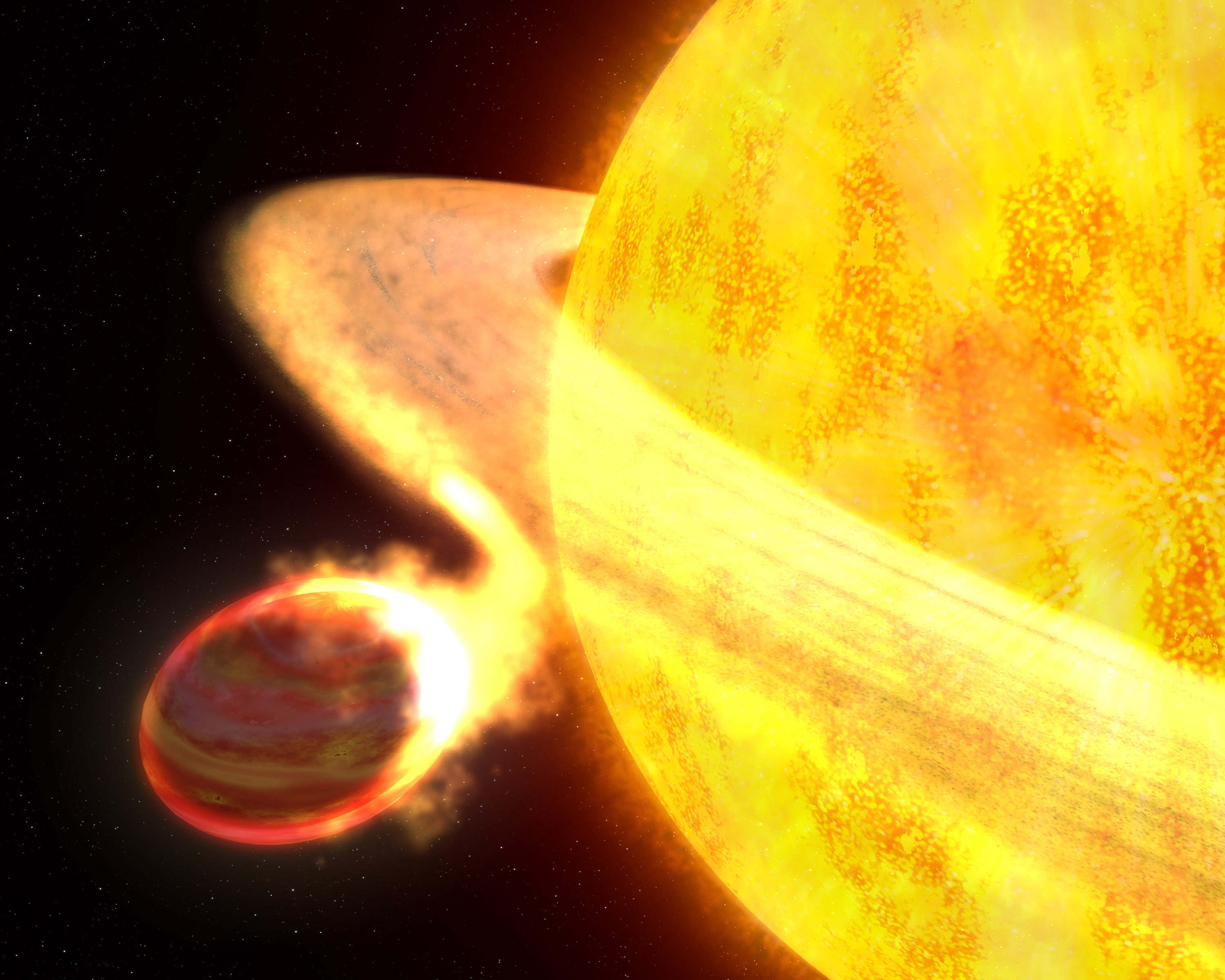We reach more than 65,000 registered users in Dec!! Register Now

The planet that is getting eaten up (WASP-12b)
- November 11, 2013
- 1301 Views
- 0 Likes
- 0 Comment
WASP-12b†is an†extrasolar planet†orbiting the†star†WASP-12, discovered by the†SuperWASP†planetary†transit†survey. Its discovery was announced on April 1, 2008.†Due to its extremely close orbit to its star, it has one of the lowest densities for exoplanets ('inflated' by the flux of energy from the star). The planet takes only a little over a day ...
h2>
Size comparison of WASP-12b (right) with Jupiter.
Characteristics
The planet is so close to WASP-12 that the star's tidal forces are distorting the planet into an egg shape and pulling away its†atmosphere at a rate of about 10?7¬†MJ¬†(about 189¬†quadrilliontonnes) per year.¬†The so-called "tidal heating", and the proximity of the planet to its star, combine to bring the surface temperature to more than¬†2,500 K¬†(2,200¬†¬įC).
On May 20, 2010, the Hubble Space Telescope spotted WASP-12b being "consumed" by its star. Scientists had been aware that stars could consume planets; however, this was the first time such an event had been observed so clearly. NASA has estimated that the planet has 10 million years left of its life.
The Hubble Space Telescope observed the planet by using its Cosmic Origins Spectrograph(COS). The Hubble Telescope observations have confirmed predictions published in Nature in February 2009 by Peking University's Shu-lin Li. The planet's atmosphere has ballooned to be nearly three times the radius of Jupiter, while the planet itself has 40% more mass than Jupiter.
![WASP-12b_%28NASA%29[1]](http://machprinciple.com/wp-content/uploads/2013/11/wasp-12b_28nasa291.jpg?w=547)
Carbon content
Recent evidence indicates that WASP-12b has an enhanced carbon-to-oxygen ratio, significantly higher than that of the Sun, indicating that it is a carbon-rich gas giant. The C/O ratio compatible with observations is about 1, while the solar value is 0.54. The C/O ratios suggest that carbon-rich planets may have formed in the star system. One of the researchers behind that study commented that "with more carbon than oxygen, you would get rocks of pure carbon, such as diamond or graphite".
The published study states: "Although carbon-rich giant planets like WASP-12b have not been observed, theory predicts myriad compositions for carbon-dominated solid planets. Terrestrial-sized carbon planets, for instance, could be dominated by graphite or diamond interiors, as opposed to the silicate composition of Earth." These remarks have led the media to pick on the story, some even calling WASP-12b a "diamond planet".
The carbon content of the planet is located within its atmosphere, in the form of carbon monoxide and methane. The study appears in the journal Nature.

Candidate satellite
Russian astronomers studying a curve of change of shine of the planet observed splashes of light indicative of an extrasolar moon orbiting the planet.
Source : http://en.wikipedia.org/wiki/WASP-12b
Related articles
- Exploring atmospheres of hot mini-Neptunes and extrasolar giant planets orbiting different stars with application to HD 97658b, WASP-12b, CoRoT-2b, XO-1b and HD 189733b [EPA] (arxiver.wordpress.com)
- Scientists discover earth-like planet (huffingtonpost.com)
- 12 Strangely Beautiful Alien Worlds You Really Wouldn't Want To Live On (buzzfeed.com)









